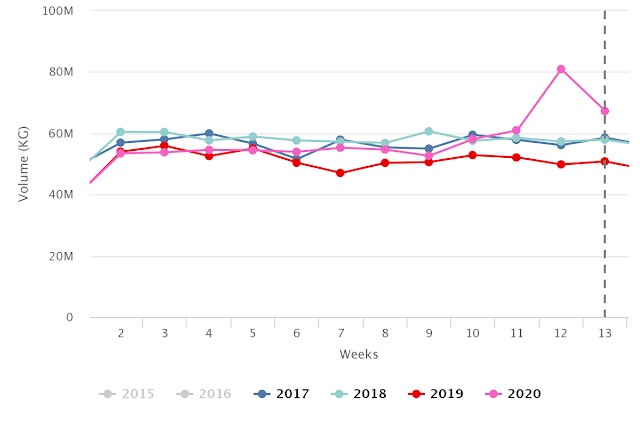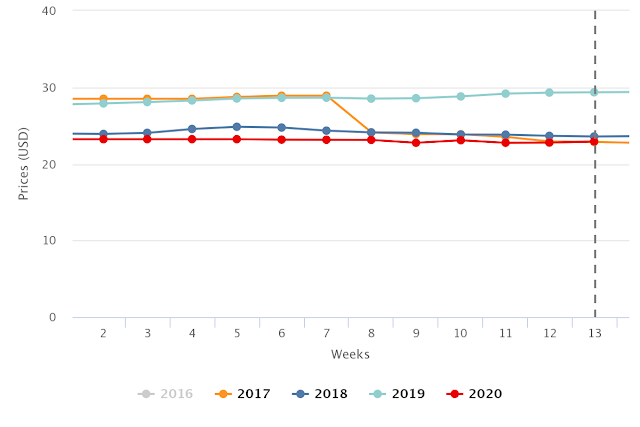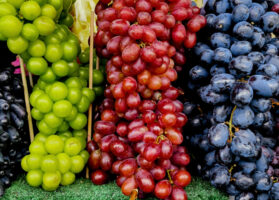Washington apple market: From a stagnant market to escalating demand

Overview of the Washington apple market with comments from Dan Davis of Starr Ranch Growers and Jason Fonville of Ag Grower Sales, complemented by charts from Agronometrics. Original published on March 24, 2020.
Washington state’s apple season has been challenging with demand not being able to meet supplies. However, on the demand side, things quickly turned around recently as a result of COVID-19. “We started to see increased demand from retail about two weeks ago, but it rapidly escalated last week,” says Dan Davis with Starr Ranch Growers in Wenatchee, WA. “We’ve seen a dramatic uptick in movement and need at retail,” he added. John Long of L&M Companies added that retail stores are seeing a rush on every product. “The apple business has been extremely good, and we are seeing that packaged product is moving faster than bulk product.”
There is a challenge on the logistics side though. “We are finding trucks to get to DC level, but there is a struggle with many retailers to get enough product from DC to store level currently,” Davis said.
Exports are down
This uptick in demand is largely domestic. The export side of the business has become a challenge. “Shipping to export destinations has become an issue with container inventory being low. Many vessels are being held up at the destination due to COVID concerns,” said Davis. L&M Companies also sees a decrease in exports. “The strengthening of the US dollar makes it more expensive for importers to buy our product. On top of this are the fears of what will happen with the virus.”

Source: USDA Market News via Agronometrics.
(Agronometrics users can view this chart with live updates here)
Foodservice demand almost non-existent
“There are three sides to the apple distribution for us,” continued Long. “It’s retail that is very busy, exports that have slowed down, and wholesales/foodservice that is almost non-existent at the moment.” Distribution from this channel has basically come to a standstill. Many schools are still providing meals for students 18 years or younger. “However, the schools haven’t been replenishing their supplies and placing orders as usual, so we definitely are missing that side of business. Overall, while retail is up, it’s not enough to make up for the decreased movement in the other arms of the sector. Retail only takes a certain segment of the manifest, and they don’t pick up the perimeters. That is why we need the other business which will take care of the outer lines of the manifest,” said Long.
Increased production capacity
As a result of the increased demand, Starr Ranch has increased its short-term production capacity. “We’ve added second shifts to help observe distancing needs. Running with smaller staff across multiple shifts has allowed us to add some throughput, said Davis.” L&M Companies also had to increase its hours of production in order to keep up with the increased demand. “We are, of course, very careful with the hygiene and our workers are divided into multiple smaller groups rather than one big crew. In case of an infection, only a smaller group will have to go into quarantine, rather than the whole crew.”

Source: USDA Market News via Agronometrics.
(Agronometrics users can view this chart with live updates here)
Impact on pricing?
Jason Fonville with Ag Grower Sales sees an increased demand across all apple varieties. “It’s all about price,” he shared. The big stars of the season were the boutique apples and people still like them, but consumers now look more at what they can afford. There are still red apples, Goldens, Granny Smiths, Pinks and Galas out there. Apples aren’t commanding higher prices, but prices aren’t going down either. “Supplies in Washington are still plentiful, and the market has been very stagnant, so it’s good to see volume on orders going up,” Fonville said. “Right now, they are at a good moving price, but by no means are they the price they were last year. However, if our supply gets run over – and there are still a lot of apples out there – prices will go up.”
The News in Charts is a collection of stories from the industry complemented by charts from Agronometrics to help better tell their story.
Access the original article with this (Link).






